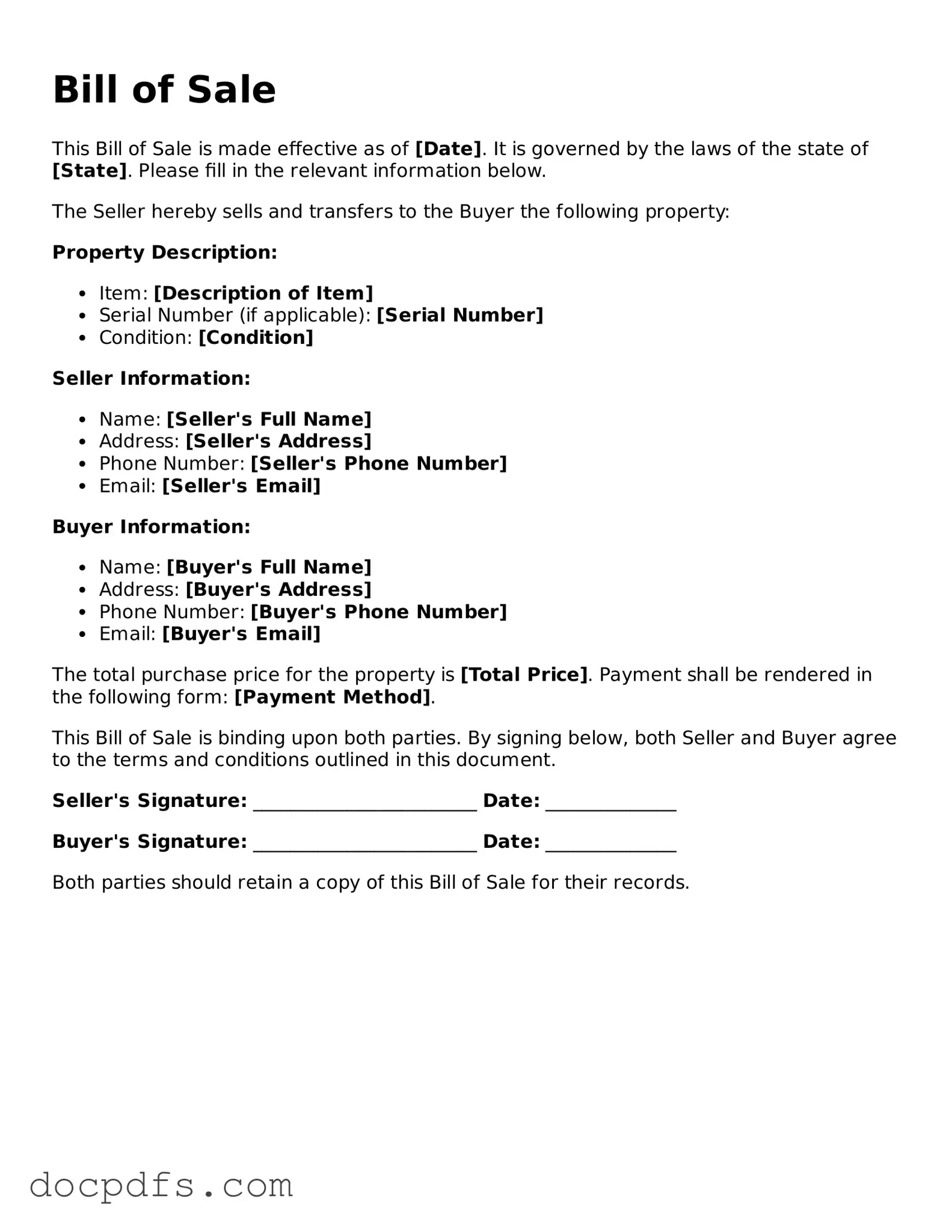Legal Bill of Sale Document
A Bill of Sale is a legal document that records the transfer of ownership of personal property from one party to another. This form serves as proof of the transaction and outlines the details of the sale, including the description of the item and the purchase price. Understanding how to properly complete a Bill of Sale is essential for both buyers and sellers to ensure a smooth transfer of ownership.
Open Bill of Sale Editor Now
